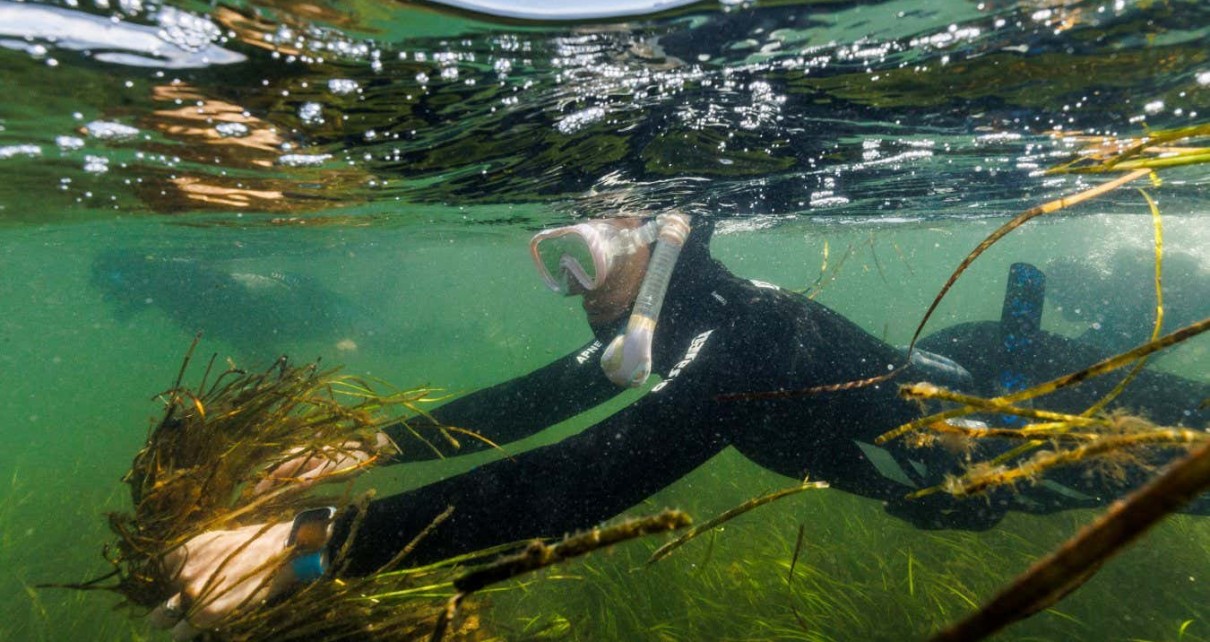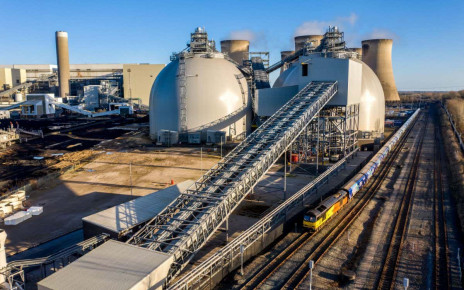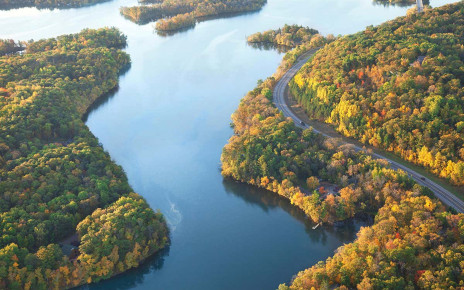[ad_1]
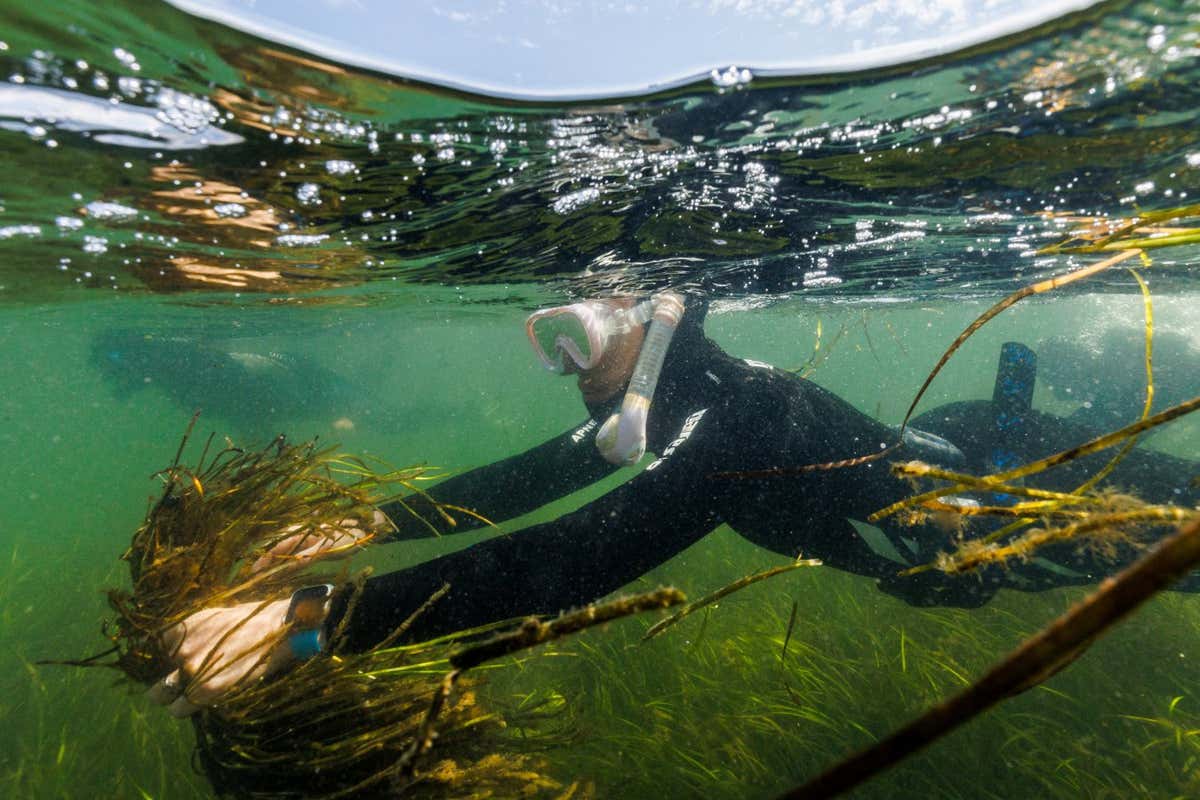
Angela Stevenson dives with a bunch of flowering seagrass she has collected
REUTERS/Lisi Niesner
THESE researchers from the GEOMAR Helmholtz Centre for Ocean Research Kiel, Germany, are on a mission to rescue a crucial marine ecosystem that is being lost to climate change: seagrass meadows. Seagrass helps the ocean store carbon dioxide and is a key source of food and shelter for marine life, but a third of European seagrass has vanished since the 19th century.
The idea behind SeaStore – the joint seagrass restoration project involving GEOMAR – is to breed a version that is more resistant to rising sea temperatures, in the hope this will help the meadows flourish again. Flowering seagrass is collected from the Baltic Sea off northern Germany and cultivated in the lab until the seeds are ready to be harvested and planted.
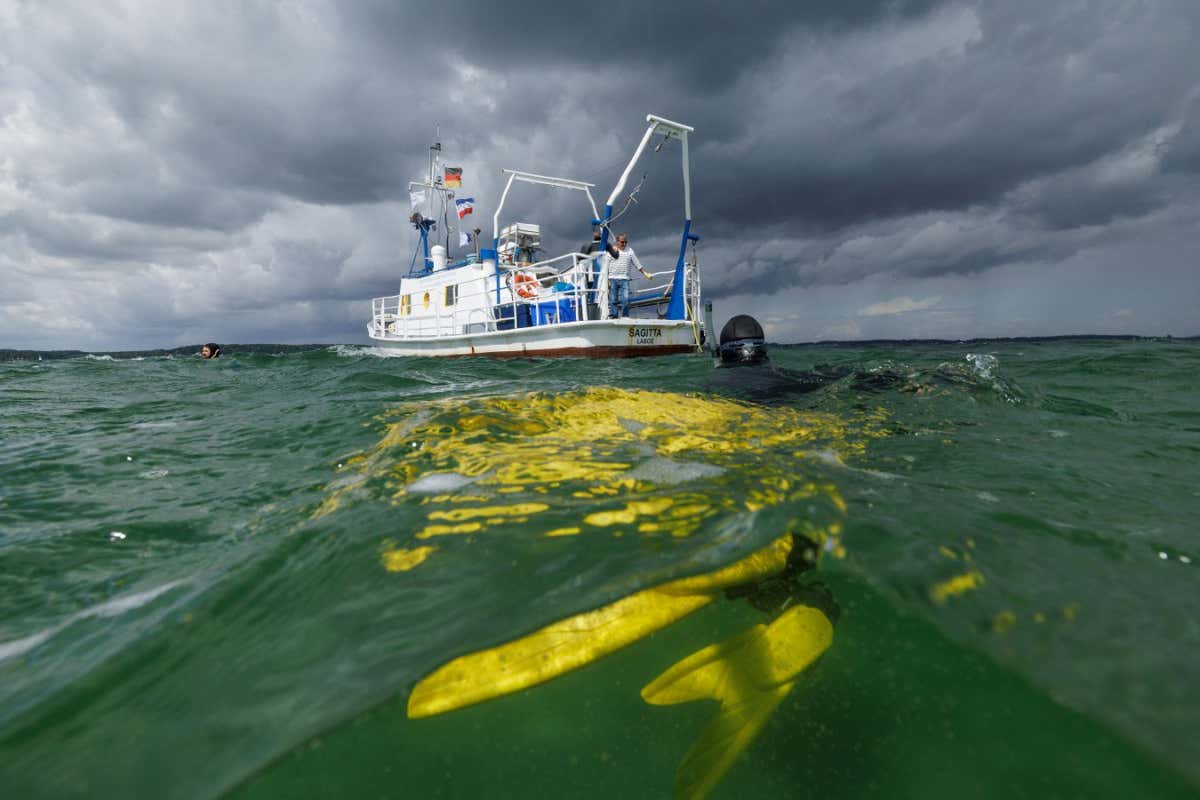
A marine scientist for GEOMAR snorkels back to the boat
REUTERS/Lisi Niesner
So far, it has been “very successful… the plants are healthy and growing well”, says GEOMAR researcher Angela Stevenson, shown in the main image collecting seagrass. Another researcher can be seen snorkelling in the second image, while the image below that is of Stevenson at a citizen diving course, where locals are being recruited and trained to help with the project.
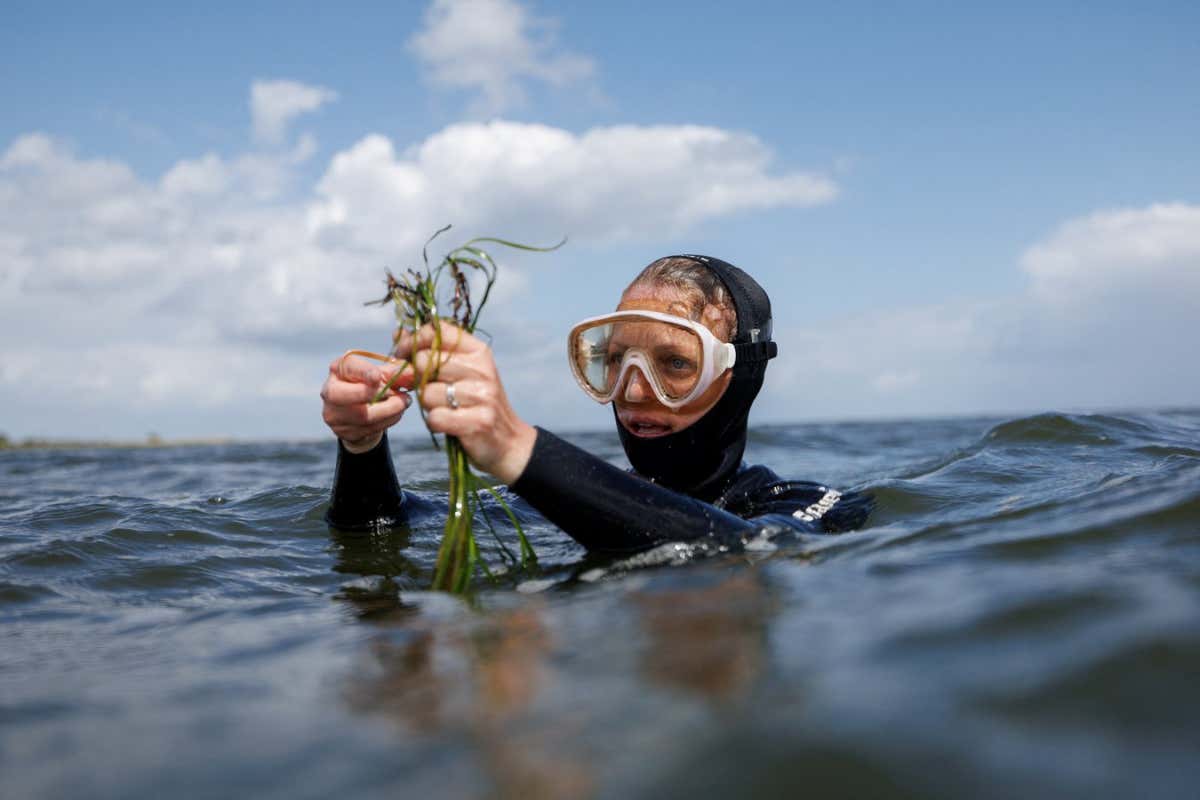
The images below show: PhD student Isabella Provera at the lab, tubes of samples to analyse the meadows’ development, a student preparing seagrass for analysis and GEOMAR researcher Tadhg O Corcora studying samples.

LEFT: Isabella Provera, in the lab at the GEOMAR Helmholtz Centre for Ocean Research RIGHT: Seagrass blades are placed in tubes
REUTERS/Lisi Niesner
GEOMAR’s Thorsten Reusch says that, despite the hype, to ensure SeaStore isn’t a “big missed opportunity”, more funding is needed to ensure the project succeeds and to get more citizens involved in ocean science.
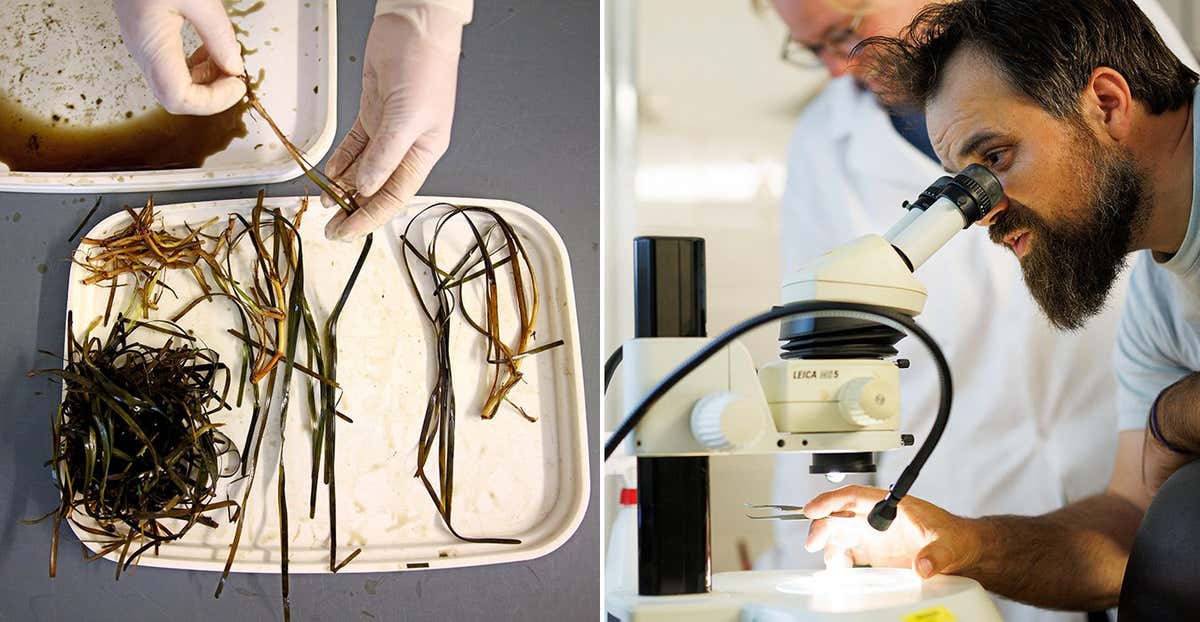
LEFT: A student prepares samples RIGHT: Tadhg O’Corcora, a marine scientist for GEOMAR
REUTERS/Lisi Niesner
Topics:
[ad_2]
Source link

